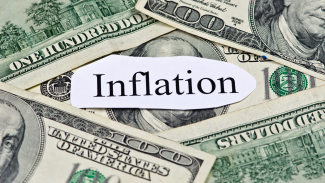
Is Inflation On The Rise?
by Brandon Miller on Sep 23, 2020
Right now, many Americans are worried about their financial health due to the impact COVID-19 has had on the country. Adding to these concerns were July's consumer prices— excluding food and energy—which rose at the highest rate in nearly 30 years. However, this jump may not be as scary as it looks on the surface.
We’ll get a better idea about the trend on inflation when the Consumer Price Index for August 2020 is released on Friday, September 11. But here are some factors to keep in mind.1
The 2% rule
According to the Bureau of Labor Statistics, core inflation is 1.6% year-over-year on an unadjusted basis. Some investors may view this as alarming given that this is the largest jump since January 1991. However, considering the Fed’s 2% target, this could be a relatively benign number.2
Inflation or Disinflation?
Chairman Powell made it known, following the most recent meeting of the Fed, that the board was wary of disinflationary pressures over inflationary ones. True, the Fed often takes a long-view approach, but this may still be positive news. Disinflation occurs when price inflation slows down temporarily. The Fed often uses this term when describing periods of slowing inflation.3
Mixed Opinions
Regardless, many professionals are divided over what this jump in price means. For some, it signals the American economy took a step toward recovery. For others, they believe inflation is already here and that July's numbers are a warning shot across the bow.4
Despite recent headlines, many believe more data is needed before this can be called anything other than a data point. However, if you’re concerned about the trend in inflation, it's never a bad idea to contact your financial professional to learn more about inflationary pressures or to chat about the upcoming CPI numbers due to be released in September.
This material was prepared by MarketingPro, Inc., and does not necessarily represent the views of the presenting party, nor their affiliates. This information has been derived from sources believed to be accurate. Please note - investing involves risk, and past performance is no guarantee of future results. The publisher is not engaged in rendering legal, accounting or other professional services. If assistance is needed, the reader is advised to engage the services of a competent professional. This information should not be construed as investment, tax or legal advice and may not be relied on for the purpose of avoiding any Federal tax penalty. This is neither a solicitation nor recommendation to purchase or sell any investment or insurance product or service, and should not be relied upon as such. All indices are unmanaged and are not illustrative of any particular investment.
The opinions expressed in this article are for general informational purposes only and are not intended to provide specific advice or recommendations for any individual or on any specific security. It is only intended to provide education about the financial industry. To determine which investments may be appropriate for you, consult your financial advisor prior to investing. Any past performance discussed during this program is no guarantee of future results. Any indices referenced for comparison are unmanaged and cannot be invested into directly. As always please remember investing involves risk and possible loss of principal capital; please seek advice from a licensed professional.
Brio Financial Group is a registered investment adviser. Advisory services are only offered to clients or prospective clients where Brio Financial Group and its representatives are properly licensed or exempt from licensure. No advice may be rendered by Brio Financial Group unless a client service agreement is in place.
Citations:
1. Bureau of Labor Statistics, August 12, 2020
2. CNBC.com, August 12, 2020
3. CNBC.com, August 12, 2020
4. CNBC.com, August 12, 2020
